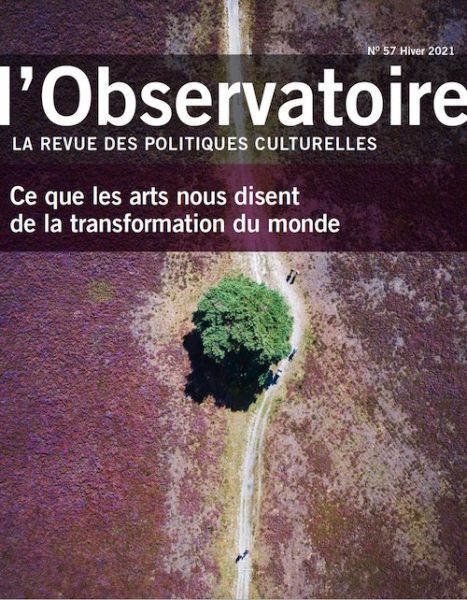
Renouer collectivement avec la terre – Fréquence Émergence
Écoutez l'épisode 6 du podcast Fréquence Émergence de Artagon Pantin sur les enjeux de renouer collectivement avec la terre

Oto Hudec, “If I Had a River,” 2012, mixed media, installation view. Image courtesy of the artist.
Introduction of the article published on Artmargins online by the artist Janeil Engelstad
Art and the Environment in East-Central Europe is an editorial project born from interviews and other forms of interaction with artists and cultural producers concerned, in one way or another, with the idea and the material reality of what goes by the name of the “natural environment.” In the different pieces collected within this project, the term “environment” unfolds into a broad variety of concepts and artistic practices that do not, and should not, become homogenized. A survey rather than a deep investigation, Art and the Environment in East-Central Europe covers a wide range of art and ideas connected to ecology, sustainability and the nexus between environment, art, and political action, from the perspective of the following participants: Barbara Benish, Nina Czegledy, Maja and Reuben Fowkes, Oto Hudec, Tamás Kaszás, Attila Nemes, Marjetica Potrč, Rudolf Sikora, Matej Vakula, Kasia Worpus-Wrońska, and Jana Želibská. The project, which stretches across ARTMargins print journal (#3.2. 2014) and ARTMargins Online, investigates pronounced, and so far largely unnoticed, environmental accents within nonofficial art practices in the countries of the former Eastern Bloc, including
Two central temporal axes emerge: first, the period of the Cold War, when environmental pressures in parts of Eastern Europe mounted inexorably and prompted some artists to develop art practices that variously reflected on these pressures; and second, the post-1989 era with its specters of globalization and global warming posing another, even more far reaching, threat. As far as the period of the Cold War is concerned, the social and political climate during the 1960s and 1970s encouraged certain artists, and not just in Western Europe, to engage with the natural environment. From Land Art to other environmentally conscious art practices—understood in broad terms, and including nature, the urban environment, and even the artist’s studio—these artists began to travel, radically questioning assumptions about making and exhibiting art. For example, in the early 1970s, Jana Želibská positioned her studio and gallery alongside waterways and in rural fields outside of small villages in the Slovak countryside. In these spaces she made work that explored feminist and mystical themes that fell outside of the official Social Realist work that was approved by the regime.
…
Janeil Engelstad
Discover the whole article on : www.artmargins.com
Écoutez l'épisode 6 du podcast Fréquence Émergence de Artagon Pantin sur les enjeux de renouer collectivement avec la terre
Lauranne Germond, co-fondatrice et directrice de COAL, dans La revue des politiques culturelles
The Creative Climate Leadership lance une série de podcast de 6 épisodes.

